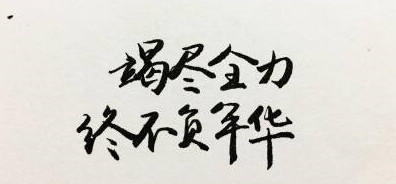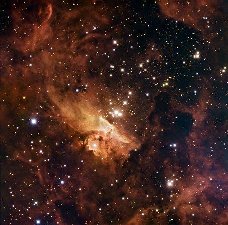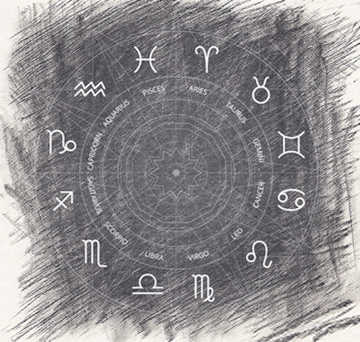 摘要:
谁有小学一到六年级英语的所有句型和必背单词Howareyou?Fine,thanks你好吗?很好,谢谢!Whatisit?Itisablackboard.它是什么?它是一块黑板.W...
摘要:
谁有小学一到六年级英语的所有句型和必背单词Howareyou?Fine,thanks你好吗?很好,谢谢!Whatisit?Itisablackboard.它是什么?它是一块黑板.W... 谁有小学一到六年级英语的所有句型和必背单词
How are you? Fine, thanks
你好吗? 很好,谢谢!
What is it? It is a blackboard.
它是什么? 它是一块黑板.
What's your name?
My name is Jenny.
你叫什么名字?我叫詹妮.
Where is it? It is in the classroom.
它在哪儿?它在教室里.
Are you ready for school?
你准备好上学了吗?
You can call me Mr. Wood.
你可以称我伍德老师.
Great!
太好了!
What's this? 这是什么?
under the blackboard 在黑板下面
on the desk 在课桌上
above the chair 在椅子上方
below the paper 在纸的下方
beside Kim 在金的旁边
in front of 在……前面
behind Danny 在丹尼后面
Where are they? 他们在哪儿?
Hi, class! 同学们好!
Let's have some fun! 让我们轻松快活一下
Yes or no, class? 是对还是错,同学们?
Is this a pen or a pencil? 这是枝钢笔还是枝铅笔?
Okay, class! 好了,同学们!
How's the weather today? It's cloudy and rainy. 今天天气怎么样?多云有雨.
What day is it? It's Monday, June ninth. 今天星期几?今天星期一,6月9日.
When is it? It's 8:00 in the morning. 在什么时候? 在上午8点.
Time to work! 该学习/干活/工作了!
Can you say ( the months of the year )? 你会说(月份)吗?
What's the date? 今天是几月几日?
Let's count! 我们一起来数数!
When is Spring Festival? 什么时候过春节?
International Workers' Day 国际劳动节
Children's Day (国际)儿童节
Teachers' Day 教师节
National Day 国庆节
Let's play a game. 我们来玩个游戏吧!
What day was yesterday? 昨天星期几?
point to 指向
What time is it? 现在是几点?
It's 7:00. 现在是7点.
go to school 上学
work hard at 努力学习/钻研……
go home 回家
It's time for lunch. 该吃午饭啦.
It's time for breakfast. 该吃早饭啦.
It's time for supper. 该吃晚饭啦.
Are you ready to listen, class? 大家准备好听没有?
How did you do, class? 大家刚才做得怎么样?
Again, please. 请再来一遍!
How old are you? I am eleven. ( I am eleven years old. )
你多大了?我十一岁.
How tall are you? I am 1.3 metres tall. 你多高?我身高一米三.
What is your address? 你的住址是哪里? My address is 522 Pard Road. 我的住址在公园路522号.
Where do you live? I live in a house. 你住在哪儿? 我住在一所房子里.
What colour is it? 这是什么颜色?
My birthday is June ninth. 我的生日是在6月9日.
Are you tall or short? 你个头高还是矮?
get to work 开始上课/干活
Stand on your feet. 请站起身来.
You are 1.2 metres tall. 你身高一米二.
She is taller and he is shorter. 她高些而他矮点儿.
far from 离……很远
live on Park Road. 我住在公园路.
Me, too! 我也是!
Here is the bus. 公共汽车来了.
How do you go to school? 你怎么去上学?
by bus 乘公共汽车.
walk to school 步行上学
I like blue. 我喜欢蓝色.
I like to read books. 我喜欢读书.
We are the same. 我们都一样.
Do you like fish for lunch? 你午餐爱吃鱼吗?
I don't like fish either. 我也不喜欢吃鱼.
What's your favourite food for lunch. 你午餐一般喜欢吃什么?
in the morning 在早上/在上午
in the afternoon 在下午
in the evening 在晚上
What do you like to do? 你想玩/做什么?
play baskerball 打篮球 play ping-pong 打乒乓球
play with toys / play with dolls 玩玩具 / 玩洋娃娃
play on the computer 玩电脑
小学六年级英语有哪些语法点???? 最好是帮我具体讲解下···· 详细点··· 需要注意哪些?????
1、小学英语介词at,in与on在时间方面的用法
at表示时间的一点;in表示一个时期;on表示特殊日子.如:
He goes to school at seven o'clock in the morning. 他早晨七点上学.
Can you finish the work in two days. 你能在两天内完成这个工作吗?
Linda was born on the second of May. 琳达五月二日出生.
1>. at后常接几点几分,天明,中午,日出,日落,开始等.如:
at five o'clock (五点),at down (黎明),at daybreak (天亮),at sunrise (日出),at noon (中午),at sunset (日落),at midnight (半夜),at the beginning of the month (月初), at that time (那时),at that moment (那会儿),at this time of day (在一天的这个时候).
2>. in后常接年,月,日期,上午,下午,晚上,白天,季节,世纪等.如:
in 2006(2006年),in May,2004 (2004年五月),in the morning (早晨/上午),in the afternoon (下午),in the evening (晚上),in the night (夜晚),in the daytime (白天),in the 21st century (21世纪),in three days (weeks/month)三天(周/个月),in a week (一周),in spring (春季).
3>. on后常接某日,星期几,某日或某周日的朝夕,节日等.如:
on Sunday (星期日),on a warm morning in April (四月的一个温暖的上午),on a December night (12月的一个夜晚),on that afternoon (那天下午),on the following night (下一个晚上),on Christmas afternoon (圣诞节下午),on October 1,1949 (1949年10月1日),on New Year's Day (新年),on New Year's Eve (除夕),on the morning of the 15th (15日的早上)等.
2、 巧记形容词的排列顺序
当两个以上形容词修饰一个名词,形容词该如何排 列?为什么不能说a black new pen,而是说成a new black pen? 这里面有无规则可循? 如果你记住opshacom这个为帮助记忆而杜撰的词, 就能掌握英语中形容词排列的顺序. opshacom中p代表opinion,指表示人们观点的形容 词,如beautiful,horrible,lovely,nice等; sh代表shape,指表示形状的形容词,如long,short,round, narrow等; a代表age,指表示年龄、时代的形容词,如old,new,young等; c代表colour,指表示颜色的形容词,如red,black, orange等; o代表origin,指表示国籍、地区的形容词,如british,canadian,german等; m代表material,指表示材料的形容词,如plastic,metal,aluminium等. 英语中这六类形容词连用时就按上述先后顺序排列, 如a nice long new black british plastic pen 当然,实际语言使用中不可能出现这么多形容词连 用的情况.
请根据形容词排列规则完成以下练习:
1>.she has a ___ jacket.(leather,brown,beautiful)
2>.he has a ___ car. (american,long,red)
3>.they live in a ___ house. (old,beautiful)
4>.we have a ___ table. (antique,small,wooden)
5>.he has a ___ jumper. (woollen, lovely, red)
6>.she has a ___ ring. (diamond,new,fabulous)
7>.it was a ___ song.(french,old, lovely)
8>.he owns a ___ dog.(black,horrible,big)
9>.she bought a ___ scarf.(gorgeous,silk,pink)
一、一般现在时主要用于:
1 、表示经常性或习惯性动作.
e.g. It seldom snows here.
2 、表示现在的特征或状态.
e.g. He is always ready to help others.
3 、普遍真理.
e.g. Action speaks louder than words.
4 、剧情图片介绍,背景说明,动作解说.
e.g. (Tom enters the room_and_sits at the table)
Doctor : What`s your trouble, young man?
Tom : I`ve caught a cold, doctor.
5 、时间、条件、让步、方式状语从句表将要发生的动作时.
e.g. Tomorrow we shall go for an outing unless it rains.
与这种时态连用的时间状语常有:
always, often, never, seldom, usually, once, a week, now 等.
二、一般过去时主要用于:
1 、表示过去某个时间发生的动作或情况(包括习惯性的动作或状态)
e.g. When did you read the novel?
She often came to help us in those days.
2 、谈到过去的情况时
e.g. I didn`t know you were so busy.
3 、谈到已死人的情况时
e.g. Lei Feng was a great communist fighter.
与这个时态连用的时间状语常有:
yesterday, last night, the other day, two months ago, in 1985, then, just now,
when, after, as soon as 引导的时间状语从句,表示主句动作开始的时间.
三、现在完成时主要用于:
1 、表示到现在为止这一时期中发生的动作或情况,即多次动作的总和.
e.g. We have learnt four English songs this month.
How many times have you read the novel?
For many days we haven`t seen each other.
2 、表示对现在有影响的某一已发生的动作.
e.g. The delegation has left 代表团已经走了(说明现在不在这里)
Look, what you have done. 看你干的事.
与这一时态连用的时间状语有:
already, yet, just, ever, never, by now, so far, recently, by the end of this month, since, for 短语,连词 since 引导的时间状语从句.
一般过去时与现在完成时的区别:
一般过去时:重在说明动作在过去发生时的具体情况(时间、地点、方式、对象、细节等).
现在完成时:只提起已发生的动作(事实)及其影响,不说明动作发生时的具体情况.
cf. Have you had your lunch?
What did you have for lunch?
I have ever been to the Great Wall,_and_I went there last summer with my father.
注:现在完成时表达的动作常具有反复性,故下面一句是错的:
Have you seen the six thirty`s news program?
应改为:
Did you see the six thirty`s news program?
四、现在完成进行时主要用于:表示过去开始的某一动作一直持续到现在,以至延伸到将来,它强调动作延续时间之长久.
e.g. I`ve been writing an article. 我一直在写一篇文章.(还在写)
cf. I`ve written an article. 我写了一篇文章.(已写完)
It has been raining these days. 这些天一直在下雨.
五、过去完成时
1 、过去完成时是一个相对时态,表示过去的过去,只有在两个过去发生的动作相比较时才可显示出来.
e.g. As soon as we got to the station, the train had left.
注:主从句表达的动作紧接时,即两动作发生的时间没有明显时间上的悬殊或空档时,主从句都可用一般过去时.
e.g. Where did your brother study before he joined the army?
2 、过去完成时可表示截止过去某一时间动作的总或动作的结束.
e.g. By the end of last month. We had reviewed four books
By eight o`clock, he had finished his homework.
与这个时态连用的时间状语常有:
by 1985, by eight o`clock, by then, by the end of last month, by the time when, when, as soon as, before 等连词引导的时间状语从句,表示主句动作结束的时间.
六、现在进行时主要用于:
1 、表示现在或现阶段正在进行的动作.
e.g. Listen, someone is crying.
What are you doing these days?
2 、代替一般现在时,表示经常性动作或状态,而含有某种感179彩.
e.g. How are you feeling today?
你今天感觉怎样?(显得亲切)
He is doing well in his lessons.
他的功课很好.(赞扬)
You are always boasting.
你老爱吹牛.(厌烦)
3 、动词 go, come, leave, arrive 等表将要发生的动作时.
e.g. They are leaving for

Shanghai.
与这种时态连用的时间状语常有:
now, these days, recently, this week 等.
七、过去进行时主要用于:
表示过去某个时刻或阶段正在进行的动作.
e.g. At that time she was working in a PLA unit.
那时她在解放军某部工作.
What were you doing this time yesterday?
与这个时态连用的时间状语常用:
at nine o`clock, this time last night, these days, at that time 等.
用 when 引导的时间状语从句表示主句的动作正在进行的时间.
e.g. When he came in, I was reading a newspaper.
注:
1 、 while 引导时间状语从句叙述过去的动作时,从句常用过去进行时.
e.g. I read a magazine while I was waiting for the bus.
2 、 when 用作并列连词,意为"这时",连接两分句时,第一句多用过去进行时.
e.g. I was reading a newspaper when he came in.
一般过去时与过去进行时的区别:
一般过去时:强调过去某一时间开始或完成的动作.
过去进行时:强调过去某一时间正在进行的动作.
试区别下面两句: We were building a reservoir last winter.
去年冬天我们在修建一座水库.(可能尚未建成) We built a reservoir last winter.
去年冬天我们修建了一座水库.(已经建成)
八、一般将来时主要用于:
表示将要发生的动作或情况
e.g. Tom will have a bike of his own.
与这个时态连用的时间状语常用:
tonight, tomorrow, the day after tomorrow, next week, in three hours, two days later 等.
一般将来时态与其它结构表将来情况的区别:
一般将来时态 :主要从时间的角度表将要发生的动作或情况.
be going to 结构 :①表(主观上)打算或准备做某事时. ②表有发生某事的预兆时.
e.g. They are going to have a competition with us in studies. It is going to rain.
据以上区别,故下面一句是错的:
I am going to be eighteen years old next year.
应改为: I shall be eighteen years old next year.
be about to do sth 结构 :意为"刚要做某事"、"马上要做某事"强调时间之紧迫性.
e.g. We are about to discuss this problem.
我们将马上讨论这个问题.
be to do sth 结构: 表示按计划、安排、规定将实施某事或表示注定会发生某事.
e.g. When is the train to leave.
急!!小学六年级英语必备知识点有哪些呀??越详细越好,谢谢!!
名词(NOUNS):名词的数:Vol.1名词复数的构成方法
Vol.2单数与复数同形的名词
Vol.3不规则的复数名词
Vol.4可数名词与不可数名词
Vol.5可数与不可数名词的修饰语
Vol.6单位词piece与pair
Vol.7A常考易错点:根据汉语习惯将英语的物质名词误认为可数名词,如:面包---bread
B想当然的判断名次的可数性.
C受汉语习惯的影响漏用单数可数名前必用的不定冠词.
名词的格:Vol.1名词的格的种类
1到6年级英语知识要点
You should be able to get familar with the basic language skill and to conduct a conversision freely when you reach grade 6. However, many can get a high score from exam of grade 6 but the comunication skill still remains grade 1 or 2, which is a common problem among the English learners.
小学1至6年级所有关于'数'的知识点总结
学好数学——成功六大法宝
一、基础理论学起
在学习数学前首先应该从最基础的东西开始学习,因为数学的每一个理论或者每一个环节都是以前一个基础理论为前提的,是环环相扣的理论链的关系.带着这种观点去学习也就不必去死记硬背一些定理、推理之类的知识了,学习起来自然就显得更加容易了!
二、避免眼高手低
数学是一门理论联系实际的学习,熟悉、理解基础理论概念只是学好数学的前提,最终的目的还是用于实际的203作中,或者说用于咱们的日常生活中去.所以要勤于做题练习,坚决避免眼高手低的学习态度,"实践是检验真理的唯一标准",数学也不例外!
三、四大思维模式
数学体系的四大思维体系:数形结合、函数思想、分类讨论、方程思想.在学习数学过程中要做到已知量和未知量的有机结合,用已知数值通过函数的方式和方程的形式展现出来,在未知待定的情况下,通过分情况的方式加以讨论并解析出问题的不同情况的答案!
四、培养学习兴趣
俗话说"兴趣是最好的老师",很多孩子或许天生就有对数学这方面有很大的兴趣,能快乐的学习数学.
五、探索求知精神
做好以上四步,你就能轻轻松松的学好数学了.如何由"好"到"精"呢?这就需要探索求知精神了.每个人对数学知识的求知欲都是不同的,在学习肯定会遇到很多困难,当你对困难的求知欲超过别人的时候,你在精神上就超过了对方,这是一种学习数学的境界!
六、勤奋成就人才
每一个成功都是三分靠的上天"注定",而七分靠的还是"打拼".即使再有头脑,再有数学天赋的人,如果一味的在学习中懒惰,在数学方面也不会有很大的作为;而一些即使平平的人,在勤奋的督促下也能做到一番作为.勤奋是成功的阶梯!









